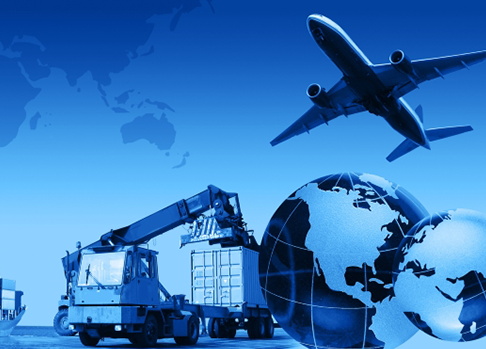
What is precision CNC components?
May 23, 2023What is Incoterm used in International Business?
Incoterms, short for International Commercial Terms, are a set of standardized trade terms published by the International Chamber of Commerce (ICC) that define the responsibilities of buyers and sellers in international trade transactions. They are widely used in import/export business to clarify the terms of the sale and the transportation of goods between the buyer and seller.
Incoterms define the obligations and costs associated with the delivery of goods from the seller to the buyer. They cover a range of issues, including the transfer of ownership, the delivery point, transport costs, insurance, and customs clearance.
There are 11 different Incoterms, each representing different responsibilities and obligations for the buyer and seller. Some of the most commonly used Incoterms include:
EXW (Ex Works): The seller makes the goods available at their premises, and the buyer is responsible for all costs and risks associated with transportation and delivery.
FOB (Free on Board): The seller is responsible for delivering the goods to the port of shipment and loading them onto the vessel, while the buyer is responsible for all costs and risks associated with transportation and delivery after the goods are loaded.
CIF (Cost, Insurance, and Freight): The seller is responsible for delivering the goods to the port of destination and paying for transportation and insurance costs, while the buyer is responsible for all costs and risks associated with customs clearance and delivery after the goods arrive at the port.
DAP (Delivered At Place): The seller is responsible for delivery of the goods, ready for unloading, at the named place of destination. The seller assumes all risks involved up to unloading. Unloading is at the buyer’s risk and cost. DAP can apply to any—and more than one—mode of transport. The buyer and seller should specify and agree upon the precise unloading spot at the named place of destination. Unless otherwise agreed between both parties, the seller cannot request renumeration for unloading costs incurred under the contract of carriage.
DAP rules require the seller to clear goods for export, where applicable, without any obligation to clear the goods for import, pay import duty or carry out import customs formalities.
Using Incoterms in import/export business helps to avoid misunderstandings and disputes between buyers and sellers, as the terms of the sale are clearly defined and agreed upon. It also helps to ensure that both parties understand their obligations and responsibilities, which can help to minimize risk and reduce costs associated with international trade.
What is HS or HTS code?
HS code stands for Harmonized System code, while HTS code stands for Harmonized Tariff Schedule code. Both codes are used to classify goods for international trade, and they are similar in structure and purpose.
HS codes are a standardized system of names and numbers used to classify traded products. They are used by customs authorities around the world to identify and track goods as they move across borders. HS codes are based on a six-digit coding system, with each digit representing a different level of classification, from the broadest category of goods down to the most specific product.
HTS codes are used in the United States to classify imported goods for customs purposes. They are based on the international HS system but include additional digits to provide more detailed information about the specific product being imported. The HTS code for a product will determine the amount of duty or tax that must be paid when the product is imported into the United States.
Both HS and HTS codes are used to facilitate international trade by providing a common language for customs authorities and importers/exporters to classify and track goods. They help to ensure that products are correctly classified, and that duties and taxes are accurately assessed, which can help to reduce the risk of errors or disputes in international trade transactions.
NVOCC vs. Freight Forwarder
NVOCC (Non-Vessel Operating Common Carrier) and freight forwarders are both entities involved in the transportation of goods in international trade, but there are some key differences between them.
NVOCCs are carriers that do not own or operate their own vessels but instead act as intermediaries between shippers and ocean carriers. They consolidate and transport goods in large quantities, negotiating rates with ocean carriers and providing bill of lading documentation to shippers. NVOCCs are responsible for the safe and timely delivery of goods, and they are liable for any loss or damage that occurs during transport. NVOCCs typically specialize in ocean freight services.
Freight forwarders, on the other hand, are intermediaries that arrange the transportation of goods on behalf of shippers, using a variety of modes of transport such as air, sea, rail, or road. Freight forwarders are responsible for handling all aspects of the logistics of transportation, including packing, warehousing, documentation, insurance, and customs clearance. They work with a network of carriers and other service providers to ensure that goods are transported efficiently and cost-effectively. Freight forwarders may also offer additional services such as cargo insurance, trade financing, and supply chain management.
In summary, NVOCCs specialize in ocean freight services and act as carriers, while freight forwarders provide a broader range of logistics services and act as intermediaries between shippers and carriers. Both entities play important roles in the international transportation of goods, and they can work together to provide comprehensive logistics solutions for shippers.
Customs Broker vs. Freight Forwarder
Customs brokers and freight forwarders are both entities involved in the international trade of goods, but they play different roles and have different responsibilities.
Customs brokers are licensed professionals who specialize in customs clearance procedures for imports and exports. They work with importers and exporters to ensure that goods are properly classified and declared to customs authorities in accordance with applicable regulations. Customs brokers are responsible for filing all necessary paperwork and documentation, including import and export declarations, duty and tax assessments, and customs bonds. They also communicate with customs authorities and other government agencies on behalf of their clients to resolve any issues that may arise during the clearance process.
Freight forwarders, on the other hand, are intermediaries that arrange the transportation of goods on behalf of shippers, using a variety of modes of transport such as air, sea, rail, or road. Freight forwarders are responsible for handling all aspects of the logistics of transportation, including packing, warehousing, documentation, insurance, and customs clearance. They work with a network of carriers and other service providers to ensure that goods are transported efficiently and cost-effectively.
In summary, customs brokers specialize in customs clearance procedures and act as intermediaries between importers/exporters and customs authorities, while freight forwarders provide a broader range of logistics services and act as intermediaries between shippers and carriers. Both entities are important for the smooth and efficient flow of goods in international trade, and they may work together to provide comprehensive logistics solutions for their clients.
What is CTPAT and what are benefits to become CTPAT member?
CTPAT (Customs-Trade Partnership Against Terrorism) is a voluntary program led by U.S. Customs and Border Protection (CBP) that aims to enhance supply chain security for imports into the United States. The program is open to businesses that are involved in the international supply chain, including importers, exporters, carriers, and customs brokers.
To become a CTPAT member, a company must submit an application and undergo a supply chain security assessment to identify potential security vulnerabilities. If the company is found to have strong security practices in place, it may be granted CTPAT certification.
The benefits of becoming a CTPAT member include:
Reduced inspections: CTPAT members are less likely to be selected for a customs inspection, which can help to reduce the time and cost associated with importing goods into the United States.
Faster processing: CTPAT members receive expedited processing at the border, which can help to speed up the delivery of goods to their final destination.
Supply chain security: By participating in the program, CTPAT members demonstrate their commitment to supply chain security and are better equipped to prevent and detect security breaches.
Competitive advantage: CTPAT certification can help to enhance a company’s reputation and competitiveness in the marketplace, as many U.S. importers prefer to do business with CTPAT-certified suppliers.
In summary, CTPAT is a voluntary program that offers a range of benefits to companies that participate, including reduced inspections, faster processing, improved supply chain security, and a competitive advantage in the marketplace.




